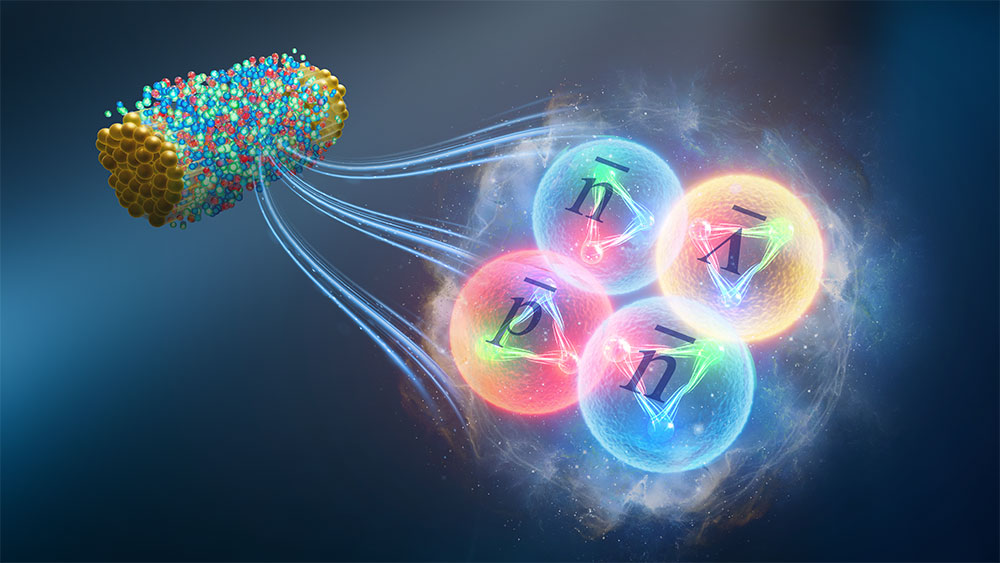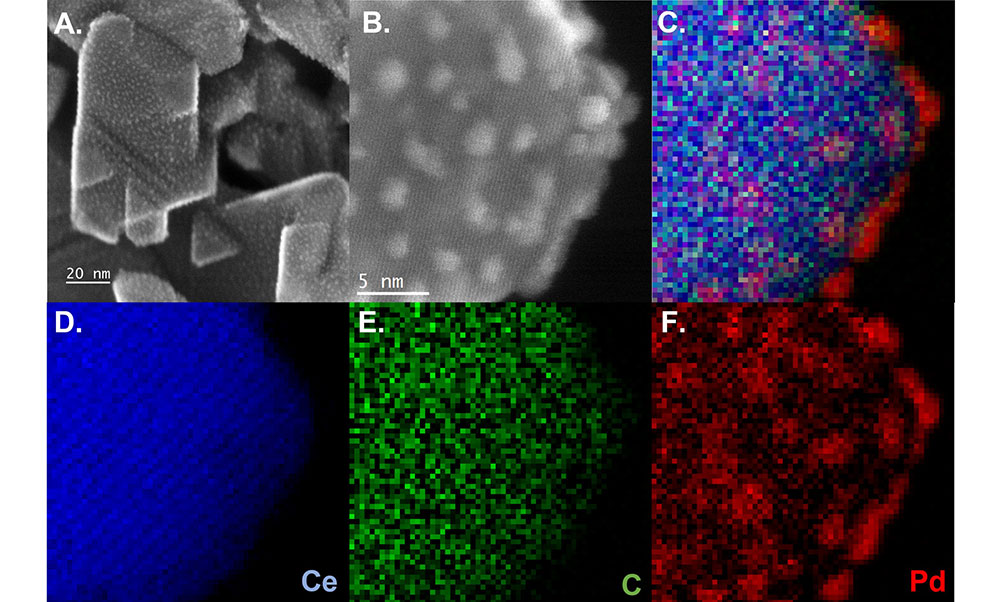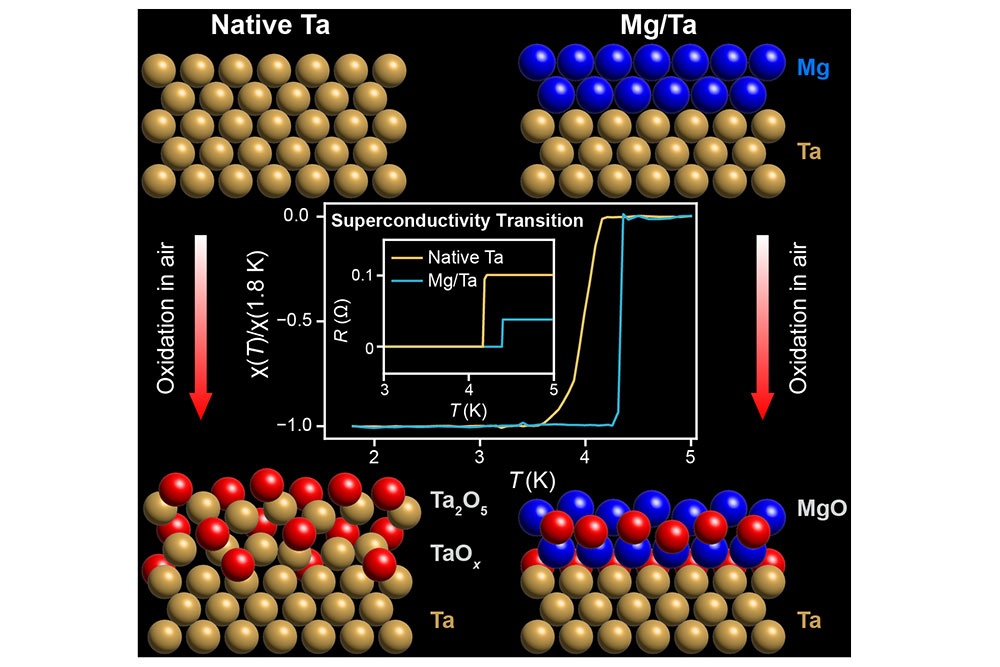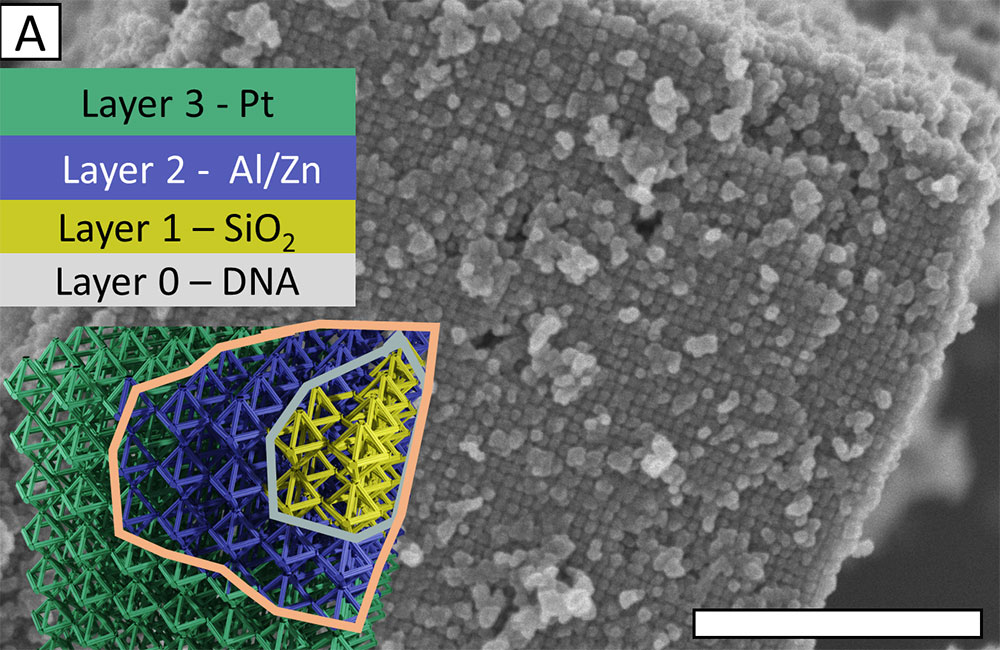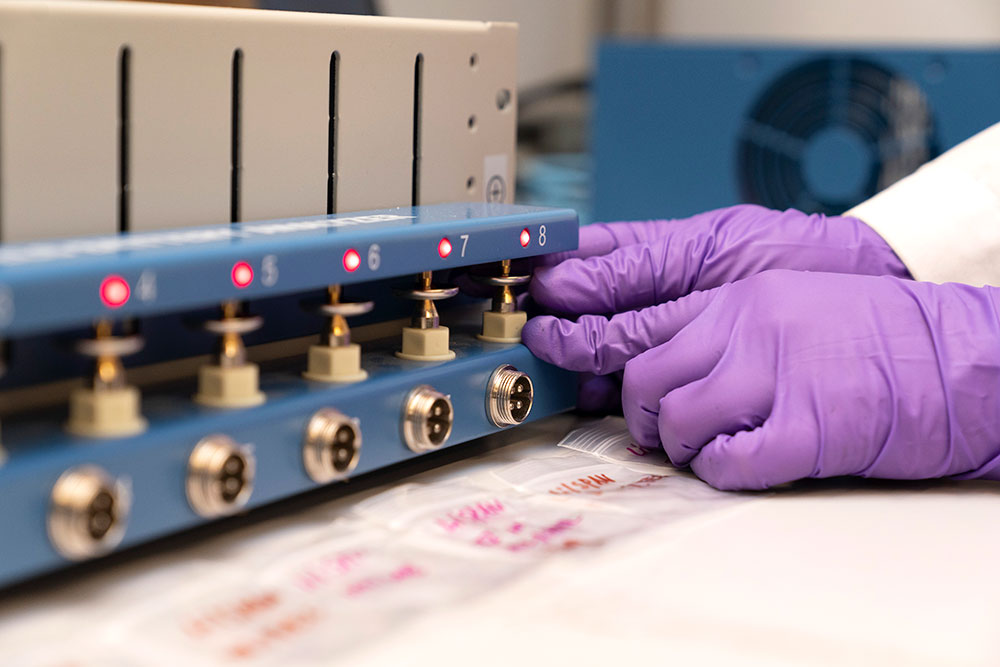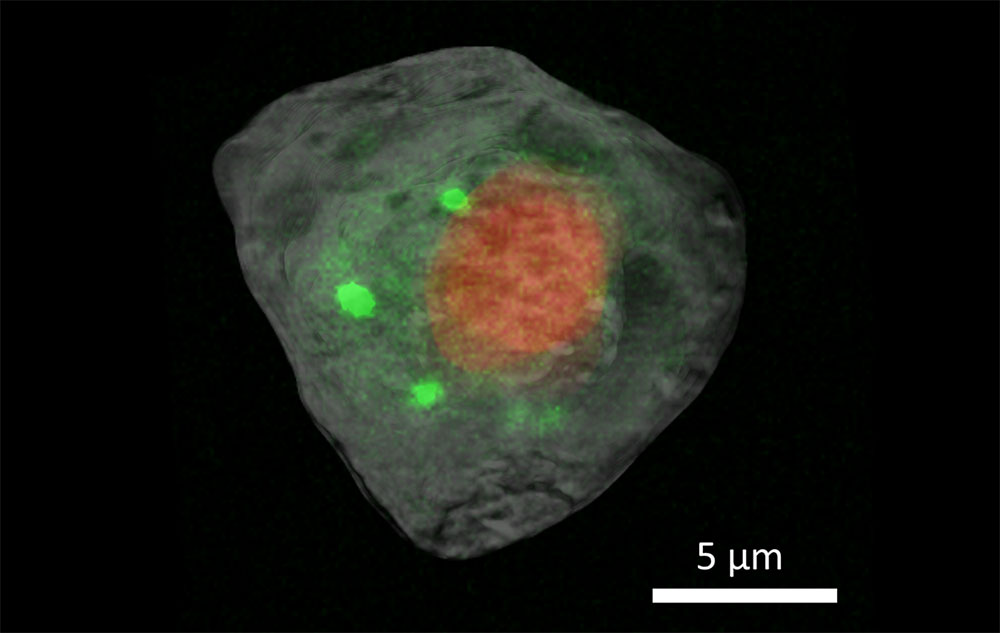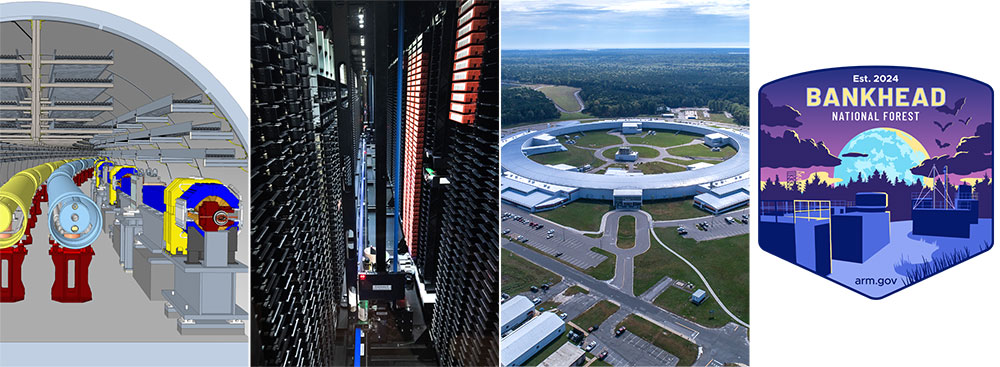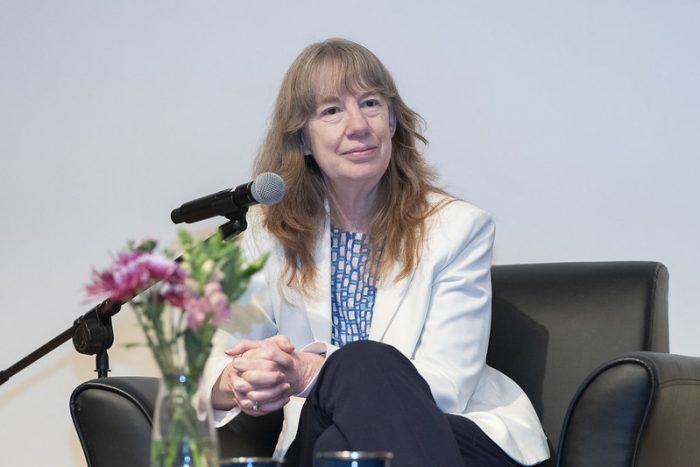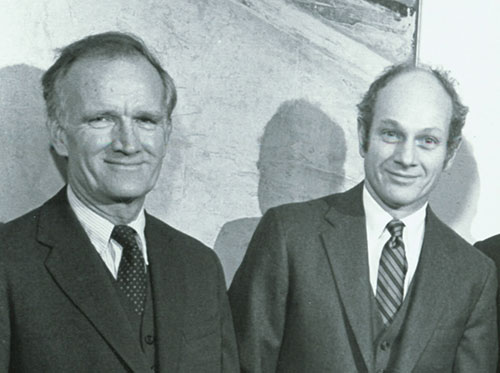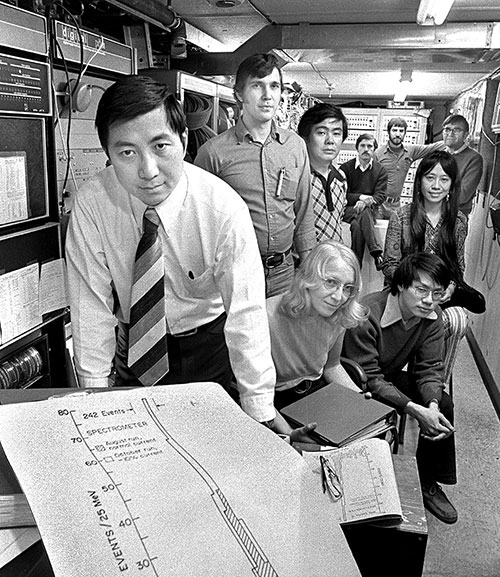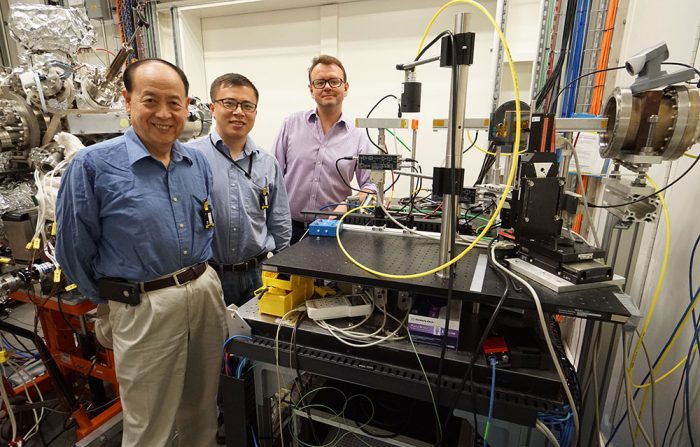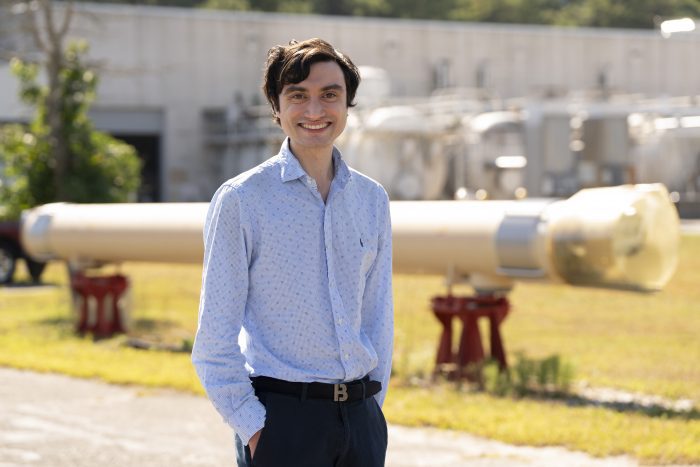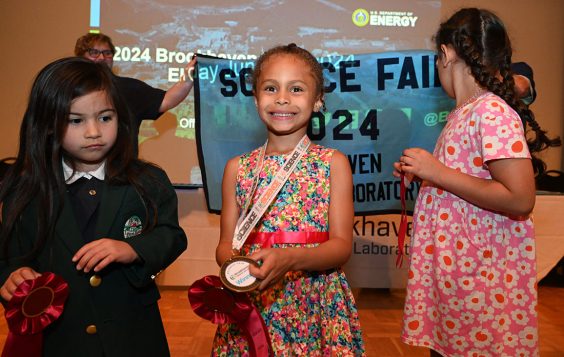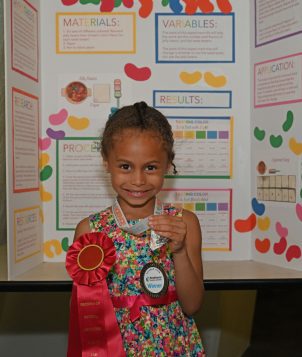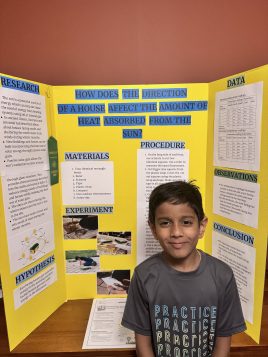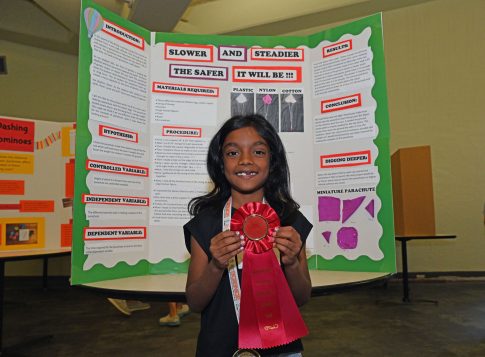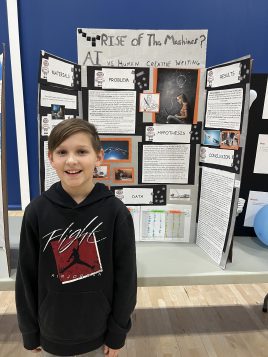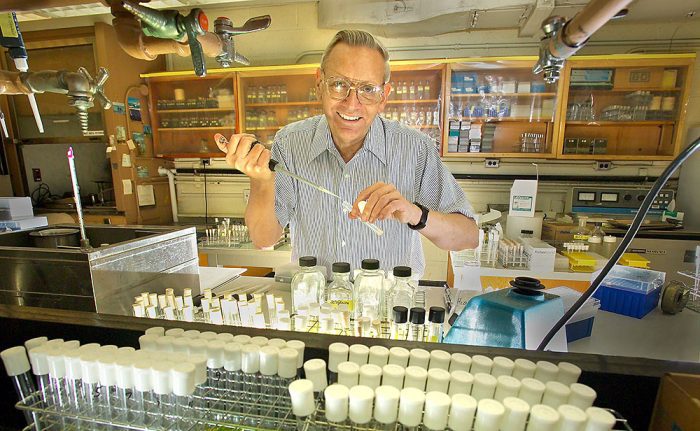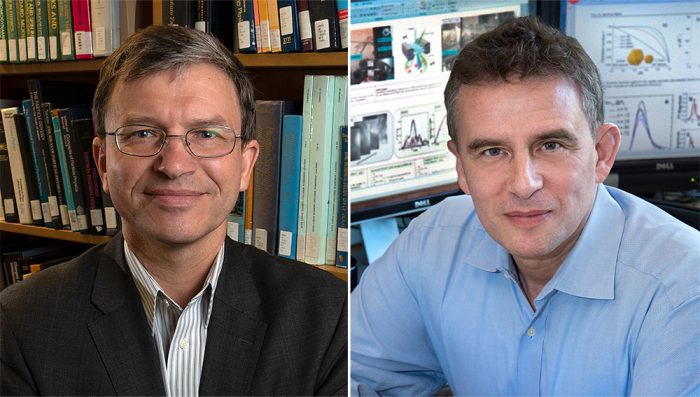Lab celebrates a year of scientific successes, from creating the biggest bits of antimatter to improving qubits, catalysts, batteries, and more!
With one-of-a-kind research facilities leveraged by scientists from across the nation and around the world, the U.S. Department of Energy’s (DOE) Brookhaven National Laboratory is a veritable city of science. Each year brings discoveries, from the scale of subatomic particles to the vastness of Earth’s atmosphere and the cosmos, that have the potential to power new technologies and provide solutions to major societal challenges. Here, the Lab presents, in no particular order, its top 10 discoveries of 2024 … plus a few major Brookhaven Lab milestones.
Heaviest antimatter nucleus
Antimatter sounds exotic, but it really does exist — just not for long. This year, scientists studying collisions of atomic nuclei at the Relativistic Heavy Ion Collider (RHIC) — an “atom smasher” that recreates the conditions of the early universe — discovered the heaviest antimatter nucleus ever detected. It’s composed of four antimatter particles: an antiproton, two antineutrons, and a particle called an antihyperon. It lasts only a fraction of a second before decaying into other particles. To find it, physicists from RHIC’s STAR collaboration searched through particles streaming from billions of collisions to find just 16 of the rare “antihyperhydrogen-4” particles. There used to be lots of antimatter, back when the universe first formed, but when antimatter meets ordinary matter, the two self-destruct. The ability to create new antimatter particles today, like these heavy antimatter nuclei, gives scientists new ways to test for matter-antimatter differences that might explain why the universe is made only of matter.
Low-temp, direct conversion of natural gas to liquid fuel
Brookhaven Lab chemists engineered a highly selective catalyst that can convert methane, a major component of natural gas, into methanol, an easily transportable liquid fuel, in a single, one-step reaction. This direct process for methane-to-methanol conversion runs at a temperature lower than required to make tea and exclusively produces methanol without additional byproducts. That’s a big advance over more complex traditional conversions that typically require three separate reactions, each under different conditions, including vastly higher temperatures. The simplicity of the system could make it particularly useful for tapping “stranded” natural gas reserves in isolated rural areas, far from the costly infrastructure of pipelines and chemical refineries, and without the need to transport high-pressure, flammable liquified natural gas. The team made use of tools at two DOE Office of Science user facilities at Brookhaven Lab, the Center for Functional Nanomaterials and the National Synchrotron Light Source II. They are exploring ways to work with entrepreneurial partners to bring the technology to market.
Plants’ sugar-sensing machinery
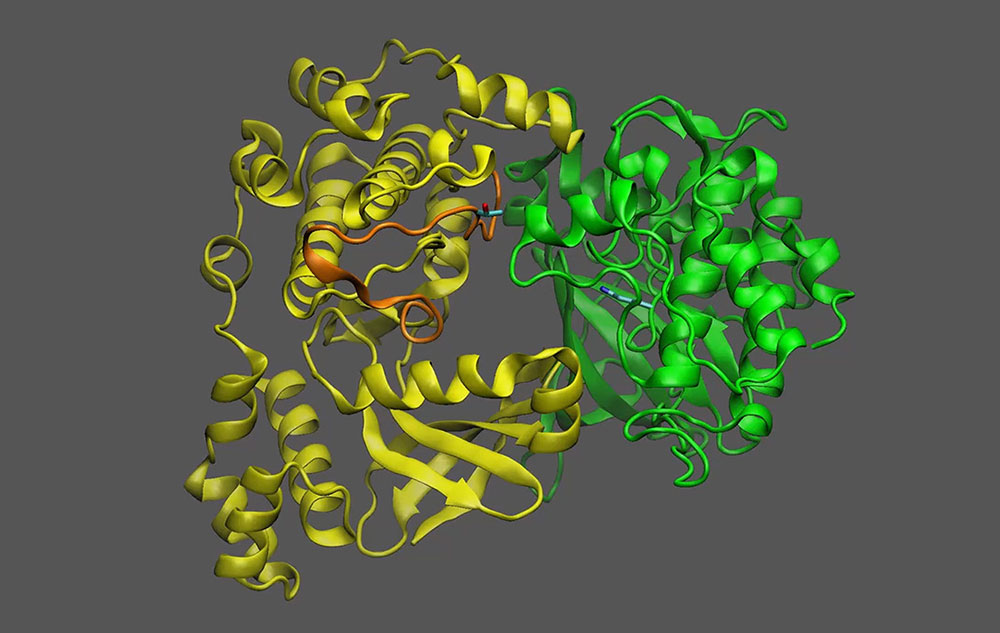
Proteins are molecular machines, with flexible pieces and moving parts. Understanding how these parts move helps scientists unravel the function that a protein plays in living things — and potentially how to change its effects. This year, a team led by Brookhaven Lab biochemists working with colleagues from DOE’s Pacific Northwest National Laboratory discovered how protein machinery in plants controls whether the plants can grow and make energy-intensive products such as oil — or instead put in place a series of steps to conserve precious resources. The researchers showed how the molecular machinery is regulated by a molecule that rises and falls with the level of sugar, the product of photosynthesis and plants’ main energy source. The research could help identify proteins or parts of proteins that scientists could engineer to make plants that produce more oil for use as biofuels or other oil-based products.
Protecting a promising qubit material
Tantalum is a superconducting material that shows great promise for building qubits, the basis of quantum computers. This year, a team that spans multiple Brookhaven departments discovered that adding a thin layer of magnesium improves tantalum by keeping it from oxidizing. The coating also improves tantalum’s purity and raises the temperature at which it operates as a superconductor. All three effects may increase tantalum’s ability to hold onto quantum information in qubits. This work was carried out as part of the Co-design Center for Quantum Advantage, a Brookhaven-led National Quantum Information Science Research Center, and included scientists from the Lab’s Condensed Matter Physics & Materials Science Department, Center for Functional Nanomaterials, and National Synchrotron Light Source II, as well as theorists at DOE’s Pacific Northwest National Laboratory. It built on earlier work that also included scientists from Princeton University.
Where cloud droplets are born
A team led by Brookhaven Lab atmospheric scientists made the first-ever remote-sensing observations of the cloud-droplet “birth zone” at the base of clouds, where aerosol particles suspended in Earth’s atmosphere give rise to the droplets that ultimately form clouds. The number of droplets formed in this transition zone will affect a cloud’s later stages and properties, including their reflection of sunlight and the likelihood of precipitation. The research was made possible by a high-resolution LIDAR system that sends laser beams into the atmosphere and measures the signals of backscattered light with a resolution of 10 centimeters. This tool, developed by the Brookhaven scientists in collaboration with colleagues from the Stevens Institute of Technology and Raymetrics S.A., will enhance scientists’ understanding of aerosol-cloud interactions and help them gain insight into how changes in atmospheric aerosol levels could affect clouds and climate — without having to fly up into the clouds.
Hacking DNA to make next-gen materials
Scientists at the Center for Functional Nanomaterials (CFN) are experts at using DNA as a tool for “programming” molecules to self-assemble into 3D nanostructures. By directing molecular and nanoscale building blocks toward specific arrangements they’ve designed, the researchers create novel, functional materials that exhibit desirable properties like electrical conductivity, photosensitivity, and chemical activity. This year, a team of researchers from CFN, Columbia University, and Stony Brook University significantly improved this process and expanded its applications. By stacking several material synthesis techniques, the team developed a new method of DNA-directed self-assembly that enables the production of a wide variety of metallic and semiconductor 3D nanostructures — the potential base materials for next-generation semiconductor devices, neuromorphic computing, and advanced energy applications. It is the first method of its kind to produce robust and designed 3D nanostructures from multiple material classes, setting the stage for new breakthroughs in advanced manufacturing at small scales.
Scientists calculate predictions for EIC measurements
Nuclear theorists used supercomputer calculations to accurately predict the distribution of electric charges in mesons, particles made of a quark and an antiquark. These predictions will provide a basis for comparison in future experiments at the Electron-Ion Collider (EIC), a facility that, among other goals, will explore how quarks, and the gluons that hold them together, are distributed within mesons, protons, and neutrons. The calculations also helped validate “factorization,” a widely used approach for deciphering particle properties. This approach breaks complex physical processes into two components, or factors, and will enable many more EIC predictions and more confident interpretations of experimental results. Calculations like these will help EIC scientists unravel how the fundamental building blocks that make up atoms stick together.
Atomic ‘GPS’ uncovers hidden material phase
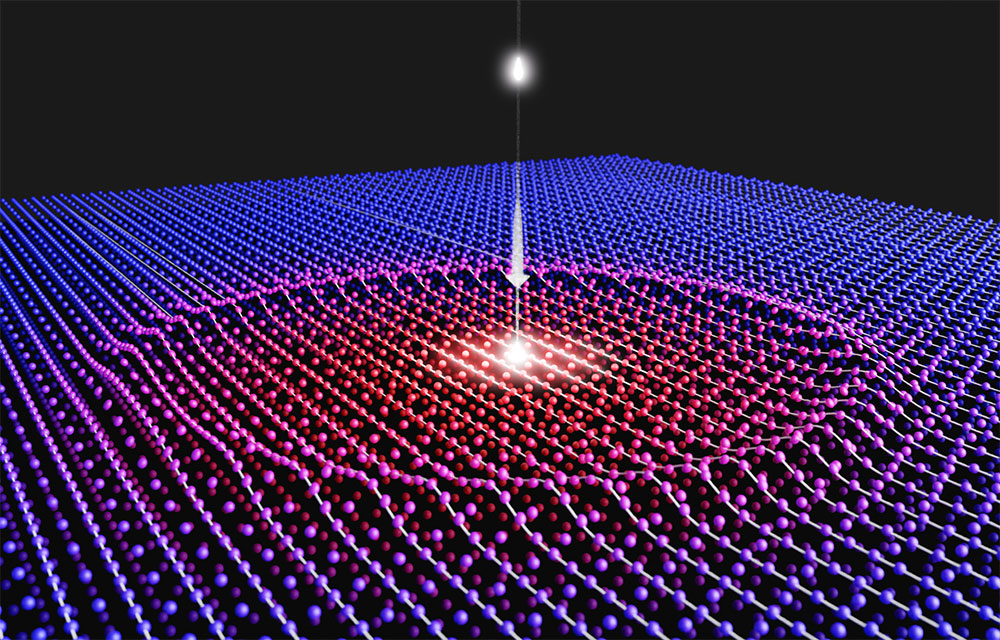
Brookhaven scientists created the first-ever atomic movies showing how atoms rearrange locally within a quantum material as it transitions from an insulator to a metal. Their research marked a methodological achievement, as they demonstrated that a materials characterization technique called atomic pair distribution function (PDF) is feasible — and successful — at X-ray free-electron laser (XFEL) facilities. PDF is typically used to observe materials that change over minutes to hours at synchrotron light sources, but the bright and short X-ray pulses produced by an XFEL facility enabled the capture of atomic movement on a picosecond time scale. With the new ultrafast PDF technique, which provides atomic routes like a navigation app, the researchers discovered a “hidden” material state, providing new insight into what really happens when certain quantum materials are excited by a laser.
Chemists engineer surprising battery chemistry
Lithium-metal batteries, which have lithium metal anodes, can store more than twice the energy of lithium-ion batteries with graphite anodes. Yet most battery-operated devices are still powered by lithium-ion batteries. This year, Brookhaven chemists made significant contributions to DOE’s lithium-metal battery efforts by adding a compound called cesium nitrateto the electrolyte separating the battery’s anode and cathode. Their addition ultimately targeted the interphase, a protective layer formed on the battery’s electrodes and closely linked to the number of times a battery can be charged and discharged. The cesium nitrate additive made the batteries recharge faster while maintaining cycle life. However, closer analysis with tools at the National Synchrotron Light Source II and the Center for Functional Nanomaterials revealed two surprises: an unexpected interphase component and the absence of one previously considered essential for good battery performance. Though these findings challenge conventional battery beliefs, they create new opportunities for battery engineering.
X-rays unlock structure and function in cells
Every plant, animal, and person is a complex microcosm of tiny, specialized cells. These cells are like their own worlds, each with unique parts and processes that cannot be seen with the naked eye. Being able to see the inner workings of these microscopic building blocks at nanometer resolution without harming their delicate parts has been a challenge. But this year, Brookhaven Lab biologists and scientists at the National Synchrotron Light Source II used a combination of X-ray methods to see inside cells in a whole new way. By using both hard X-ray computed tomography and X-ray fluorescence microscopy, they can reveal not just the structural details but also the chemical processes inside cells. This multimodal X-ray imaging approach could have significant implications in fields such as medicine, bioenergy, agriculture, and other important areas.
Other major milestones Brookhaven Lab celebrated this year
Electron-Ion Collider begins procurements
DOE gave the go-ahead for the purchase of “long-lead” equipment, services, and/or materials needed to build a state-of-the-art Electron-Ion Collider (EIC). This nuclear physics facility will be built at Brookhaven in partnership with DOE’s Thomas Jefferson National Accelerator Facility and a wide range of other partners to explore the inner workings of the building blocks of matter and the strongest force in nature. Purchasing materials and equipment needed for sophisticated components for the EIC accelerator, detector, and supporting infrastructure ensures that the team will be ready when construction begins. It’s an important step toward the ultimate goal of efficiently delivering one of the most challenging and exciting accelerator complexes ever built by the mid 2030s.
Scientific data storage record
The Lab’s Scientific Data and Computing Center now stores more than 300 petabytes of data — the largest compilation of nuclear and particle physics data in the U.S. For comparison, that’s far more data than would be needed to represent everything written in human history plus all the movies ever created. The cache comes from experiments at the Relativistic Heavy Ion Collider and the ATLAS experiment at the Large Hadron Collider, located at CERN, the European Organization for Nuclear Research. Thanks to a combination of relatively economical tape storage and a robot-driven system for mounting data to disks, the cache is easily accessible to collaborators all around the world. The system is set up to meet evolving and expanding data needs for a range of existing experiments at Brookhaven and beyond, including the future Electron-Ion Collider.
NSLS-II celebrates 10 years of light
On Oct. 23, the National Synchrotron Light Source II (NSLS-II) celebrated its 10th anniversary of first light, the moment when its first X-rays were delivered. Over the last decade, this ultrabright light source has grown from six beamlines to 29, ramped up its accelerator current from 50 milliamperes to 500 milliamperes, hosted nearly 6,000 visiting researchers from around the world, and published more than 3,200 research papers. Since 2014, NSLS-II has enabled researchers to study the physical, chemical, and electronic makeup of materials with nanoscale resolution. And with continual advancements over its 10-year history, the facility remains one of the world’s most advanced light sources, accelerating breakthroughs in fields ranging from biology to quantum information science.
Atmospheric observatory opens in Alabama
Brookhaven Lab’s world-leading atmospheric scientists led the plan to install a suite of DOE Atmospheric Radiation Measurement (ARM) user facility instruments at a new observatory in the Southeastern U.S. The Bankhead National Forest observatory opened on Oct. 1 and hosted its first scientific workshop and media tours earlier this month. For at least five years, the observatory will provide data for scientists to investigate the complex interactions among clouds, vegetation, and aerosols suspended in the atmosphere. The observatory will contribute valuable insights into aerosol-cloud interactions and feed data to weather and climate models for a more comprehensive understanding of Earth’s atmospheric dynamics.
The research described above was funded primarily by the DOE Office of Science. RHIC, CFN, NSLS-II, and ARM are DOE Office of Science user facilities.
Brookhaven National Laboratory is supported by the Office of Science of the U.S. Department of Energy. The Office of Science is the single largest supporter of basic research in the physical sciences in the United States and is working to address some of the most pressing challenges of our time. For more information, visit science.energy.gov.


